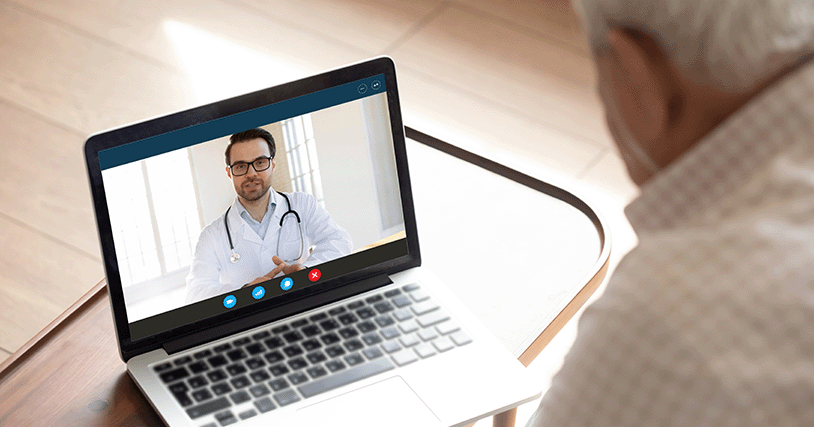Connectivity Is the New Backbone of Healthcare

Anyone who has spent time inside a hospital or a doctor’s office recently has seen first-hand the technical revolution sweeping through the health care system. Wireless devices in patients’ rooms send vital signs and alerts to the nurse’s station. Bluetooth is used to monitor pacemakers. Doctors pull MRI results up on their iPads. Coming soon: stand-alone 5G networks providing connectivity for entire medical campuses.
These and other innovations allow medical institutions to provide higher levels of care while helping reduce costs. But each new technical step forward requires an ever-increasing level of network capability and sophistication. And that requirement for more robust networks has spread beyond traditional medical settings, with the COVID pandemic forcing providers and their patients to become adept at using telemedicine-enabled home health care.
As healthcare adjusts to each technological step forward, a new perspective on how best to provide healthcare may be on the horizon. Challenges to access and affordability were exposed by the pandemic. Healthcare providers did a remarkable job shifting almost overnight to telehealth to keep the nation healthy and safe, with telehealth now mainstream for millions of patients and care providers.
As telehealth has grown in usage, health systems and care providers have quickly developed the much-needed clinical workflows to adopt it. This process enhancement is allowing home health the opportunity to showcase its benefits from an access and cost standpoint. Promising platforms like Medically Home are emerging to tactically leverage telehealth to offer acute and chronic care at the home. This geographical expansion of the care footprint into the home is enabled by secure network access options being made available and duly managed. Health system IT teams familiar with managing infrastructure at clinics and within the hospital now need to manage connected devices at the home, significantly introducing new operational complexities of scale and new technology onboarding. Thus, we anticipate forward-looking health systems to partner with Managed Service Providers equipped to manage this new technology challenge, allowing the health systems to focus on the clinical challenges these new points of care present.
Another effect of the pandemic was the delay in enforcing the 21st Century Cures Act. The Act signed into law by President Obama in 2016 was a bipartisan directive to the healthcare industry to significantly enhance data sharing, among other things, to directly affect patient outcomes and give innovators access to data to improve care delivery. The Act is now in effect and is anticipated to create increased demand for better network resources. The data networking and security world is keen to see how healthcare IT leaders manage this surge of data they now must make available to a new set of entities like tech companies. Application programming interfaces (APIs) are the mode of choice to make this data flow seamless. With health systems living in a hybrid cloud state, their API gateways will now need a new governance and access models. The jury is out on what architectural and, thus, infrastructural adjustments would have to be made to be in meaningful compliance. But these decisions can’t be delayed for long.
Compliance regimes tend to create a defensive posture not always conducive for innovation, but this law promises to change that -- at least that’s what it intends to achieve. The adoption and acceptance of telehealth and the surge of data available to healthcare ecosystem providers will spur further innovations and improve service delivery. The healthcare IT industry is laying the foundation to take best advantage of these changes.
Adding more and more people and devices to networks raises security concerns across all business networks. Healthcare services are no different. The number and variety of devices being used is growing, the applications -- and places where they are located -- are increasing, and the user profiles are changing. By turning to Managed Service Providers for assistance managing and securing the network, medical IT departments can offer the staffs of hospitals and medical providers the tools they need to deliver the highest level of patient care. The pandemic accelerated many of the technological advances in healthcare and it will be interesting to see how the digitization of healthcare unfolds going forward.